Material Thoughts: The 2020 Dental Products Report Materials Survey
The Dental Products Report 2020 Materials Survey looks at the types of materials you prefer in different situations, how you manage materials inventory, and how you evaluate and adopt new material options.
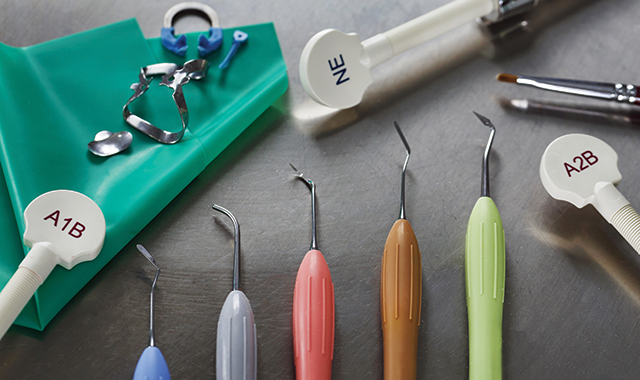
Many of the advances in restorative dentistry are driven by advances in materials. Every generation of new composites, adhesives, and every other dental material category aims to achieve an end result closer to natural dentition in looks, function, and durability. They also aim to be easier to use and more convenient for clinicians and patients alike.
This consistent development of new material choices means dental professionals are constantly challenged to stay informed of all of the options that could bring benefits to their practices and their patients. But adopting new materials can be more complex than opening a package with different branding on the outside. New materials often mean new clinical workflows, sometimes new operatory equipment, and even new training. This means changing what’s used in a practice is a choice rarely made on a whim.
To find out what goes into those decisions and what types of material choices dental professionals are making of late, Dental Products Report conducted our 2020 Materials Survey. We asked you, our audience, about your materials decisions and the reasoning behind your choices. Read on to see how your material preferences fit with those of your peers, as well as for material advice from Editorial Advisory Board Member Dr. Sarah Jebreil.
Continue to page 2 for Dr. Jebreil's take…
The choice is yours
Advice on materials and the choices clinicians make about the brands and materials they use.
by Dr. Sarah Jebreil
If it ain’t broke don’t fix it…
This old adage is the tune many of us run our practices to, but why? Why are we so hesitant to try new things? Is it the research we need to see, or the live demonstration, or the approval of like-minded colleagues, or our patients’ asking for it to get us to try something new?
I would say it is different for all of us, as some of us are more risk-adverse and others like to stay in their comfort zone, but how do we know if by staying in our comfort zone we are hurting our quality of dentistry or if by being more risk-adverse we are missing chances to improve our standard of care? Of course, it’s not a one-size-fits-all situation, as the quality of care your practice gives is unique to the mission of your practice and therefore assessing a new material is truly a personal decision.
Bonding Decisions
The perfect bonding agent has been an area of debate forever. There are so many bonding agents it hard to know which one really is the best. Bonding is case sensitive and technique sensitive. So, do you choose one go-to agent for everything, or do you choose a plethora for each situation? Do you choose according to colleagues and articles’ approval, or what has been tried and true in your hands? Also, how expensive is the risk if this product fails in your hands or fails to deliver as promised?
I don’t know about you, but the health of my practice relies on the strength and predictability of my bonding agent because I use it for almost every procedure. Because it is such an essential part of my practice, I can’t afford to just try something new. When I started practicing, I used the bonding agent that was given to me at the practice I was associating. After a time, I started to realize I was having a lot of failures with de-bonding and patient sensitivity. I immediately ordered my tried and true bonding agent that I was familiar with since dental school, and everything improved.
Since then I have been very hesitant to change, but a few years ago I learned of another agent while taking a course and I was amazed at its reviews and ease of use. I decided to give it a try, and since then I have been hooked. So, it is understandable that materials that make up an integral part of your practice must be chosen with a great deal of precaution.
Switch Decisions
Other materials, such as liners and matrix systems, are easier to change as they are not as impactful. It is noted that many clinicians debate for some time before buying a new piece of equipment because the price tag is much higher and oftentimes the learning curve can be cumbersome. Clinicians and dental teams often become stuck in their routines and it can be challenging to bring a new piece of equipment in to disrupt the usual flow. If the equipment is guaranteed to save time and money but the price tag is high, it is often the thought of training our staff something new that drives our decision whether the investment is right for our practice.
I personally debated a while before buying an intraoral scanner, and then after buying it I had buyer’s remorse because initially impressions were so much quicker than scanning. As we became more adept with the scanner, I cannot imagine not having it in my practice. I believe it is good for our teams to constantly change and evolve-it keeps us our brains working and alert rather than on autopilot.
Keeping Patients in Mind
Lastly, the other big driver in what determines our material choice is our patients. Do they like our rubber dams, or do they complain too much? Do we try a different isolation system to wow our patients, or will they complain about that too? Oftentimes, it’s consumer behavior, meaning it’s the way we present our materials and methods to our patients.
Having conversations with our patients on what materials we are using and how great it is for them and their overall health usually wins their satisfaction. But what about when it comes to appearance of our restorations? There’s not much sweet talking we can do if our restorations stick out like a sore thumb. In those instances, patients definitely drive the clinician’s material choice. We are all so eager to “wow” our patients we will often try anything that sounds promising in hopes of gaining our patients’ approval.
As you can see, there are three big factors that motivate clinicians’ material choices: Cost of failure, barrier to entry (cost vs. changing the team’s routine), and patient approval. Each material choice is unique to each practice. Oftentimes, if we work for a DSO or large group, we choose from a curated formulary or simply use what we are given. If you do have the ability to pick and choose what materials your practice utilizes you should consider that a gift with which you chose carefully.
Continue to page 3 for the survey results…
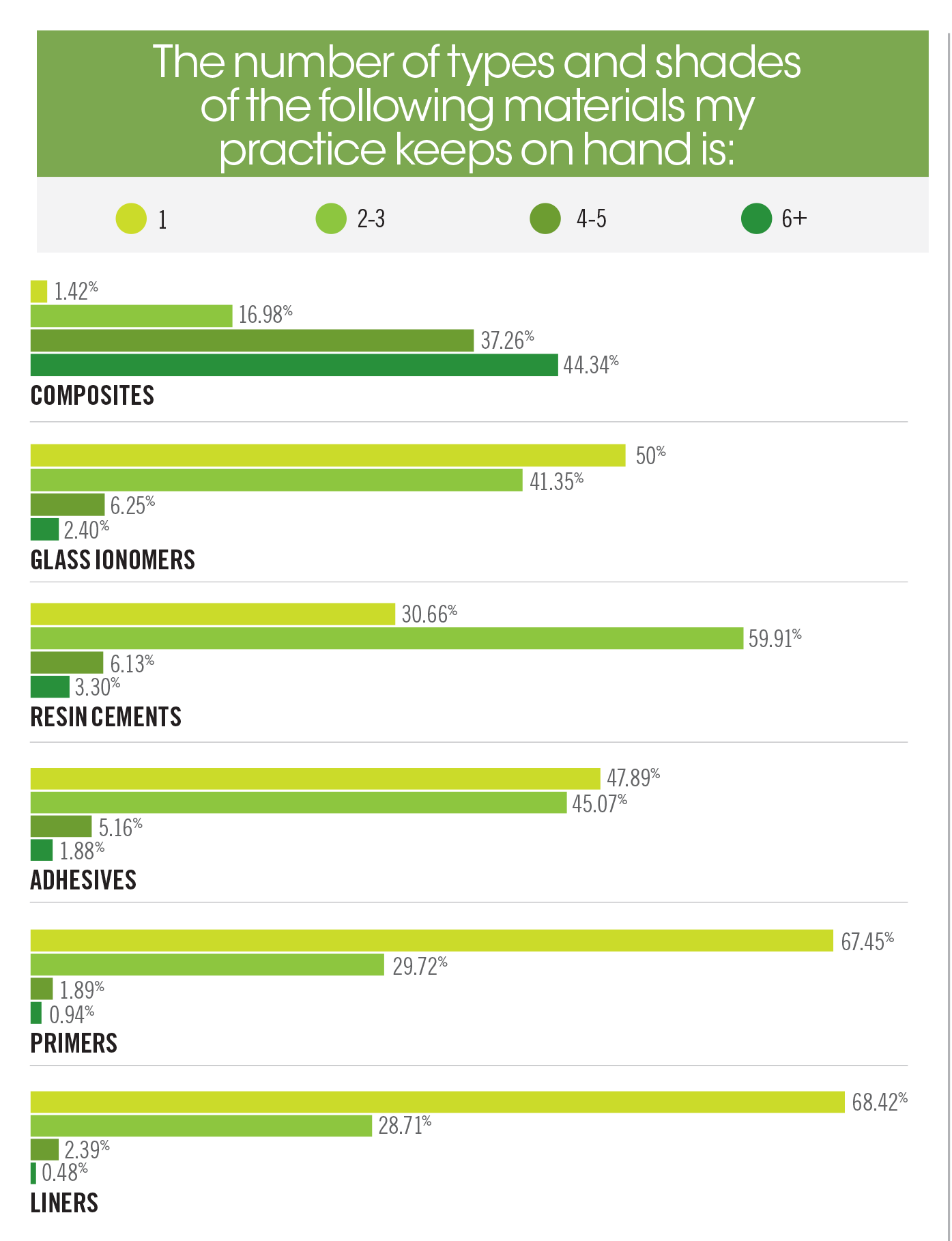
Materials Inventories
The properties of dental materials, such as shade and shelf life, play a big role in the way those materials are stocked at dental practices. Having the material you need on hand when you need it is key. Our survey shows dental composites are the material where the largest variety is kept on hand. 44% of respondents stock six or more, and another 37% stock four or five. The choices simplified for other types of materials, with fewer than 10% of respondents keeping more than 3 resin cements or adhesives on hand.
Continue to next page for more survey results…
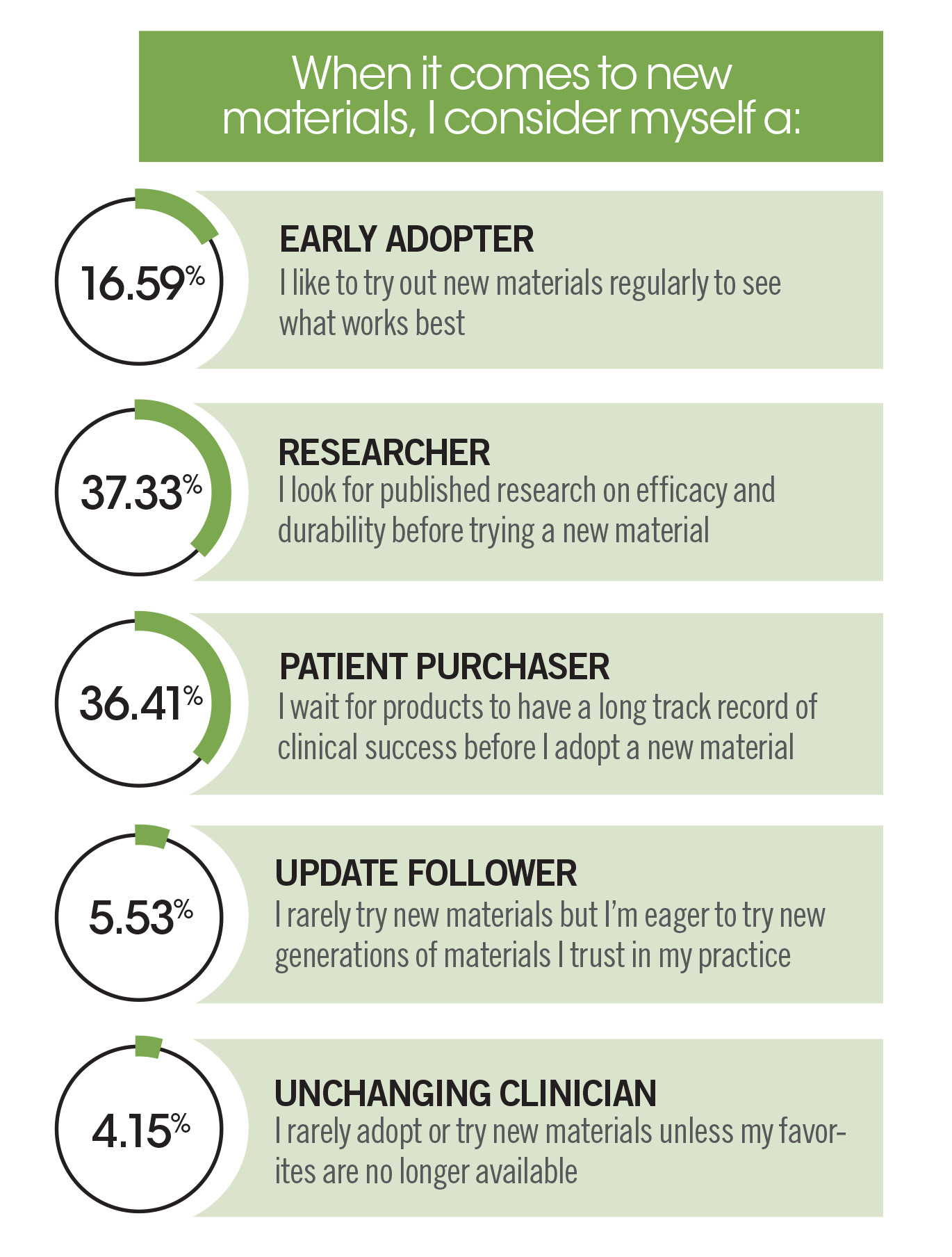
Material Reflections
When conducting these surveys, we always ask how you describe yourself and your material decision-making process. The two most common categories were the researcher and the patient purchaser, both relying on a published track record before adopting a new material. The least popular description in this survey-chosen by just 4% of respondents-was of someone uninterested in trying new things. With so many material options available all the time, there is no shortage of options for curious clinicians to try.
The 2020 DPR Materials Survey continues on the next page…
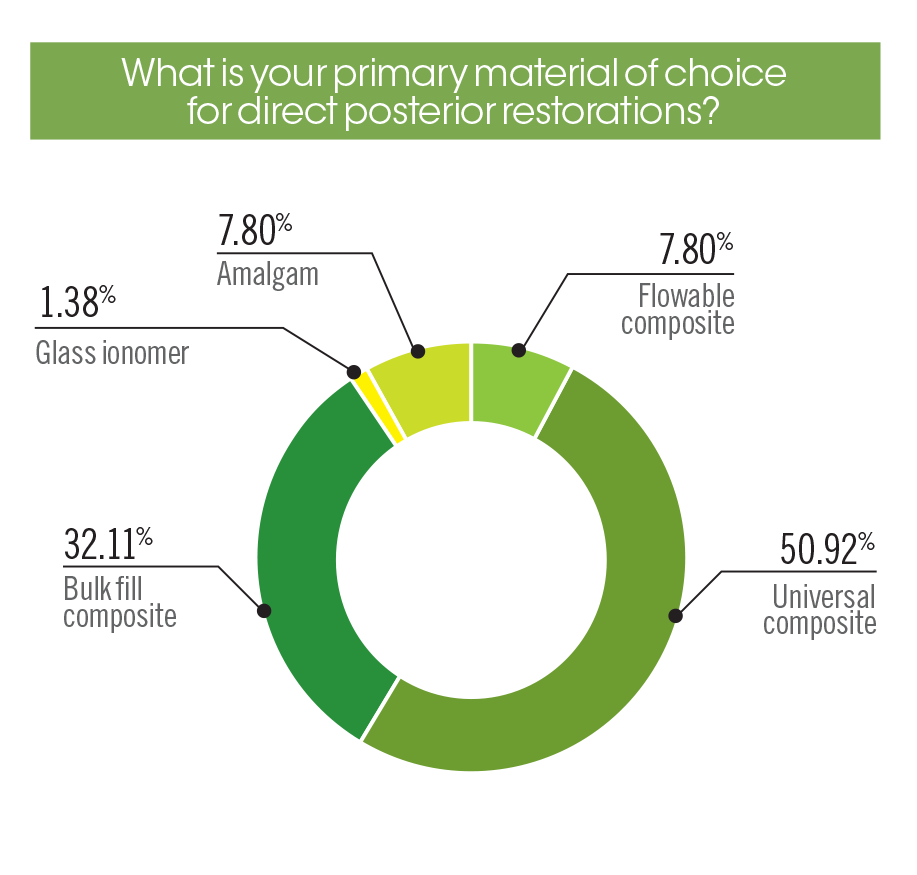

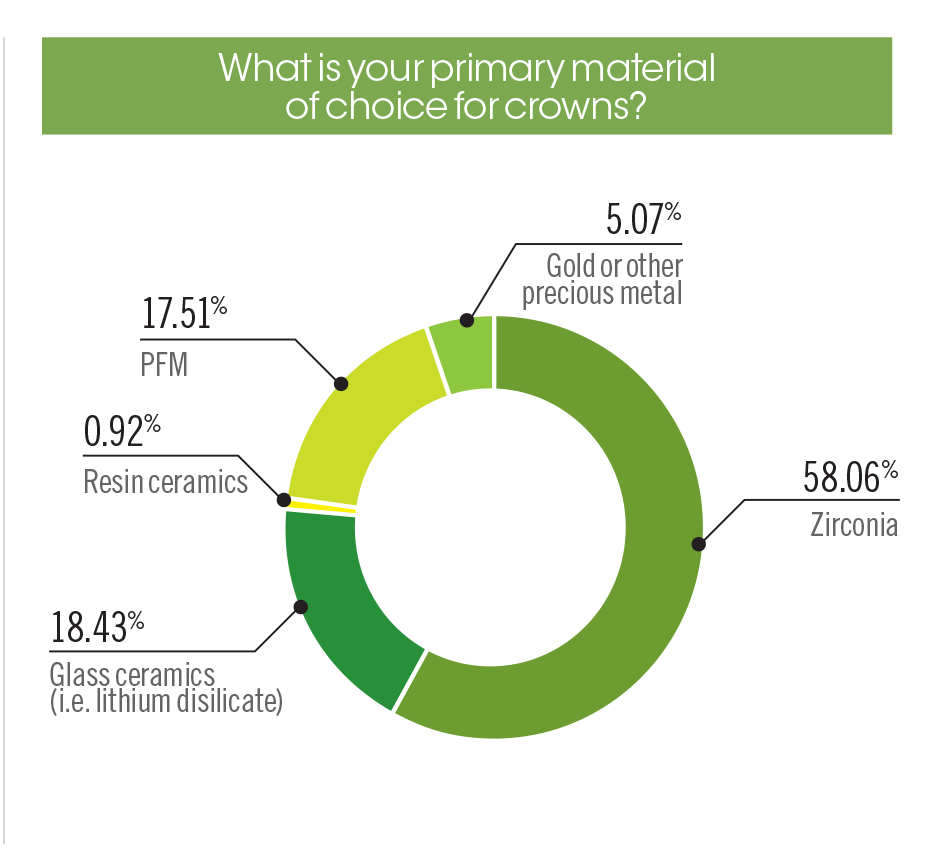
Materials of Choice
It’s no big surprise that different types of materials are the go-to choices for different types of restorations. However, universal composites are the go-to for most direct restorations. For direct posteriors, 51% of you grab the universal, while 32% prefer a bulk fill option. However, in the anterior, 82% of you say a universal composite is your first choice.When it comes to indirect crowns, zirconia is the choice for 58% of you, while glass ceramics such as lithium disilicates were the preference for 18%, and porcelain-fused-to-metal crowns are still the go-to for another 18% of you.
The 2020 DPR Materials Survey concludes on the following page…
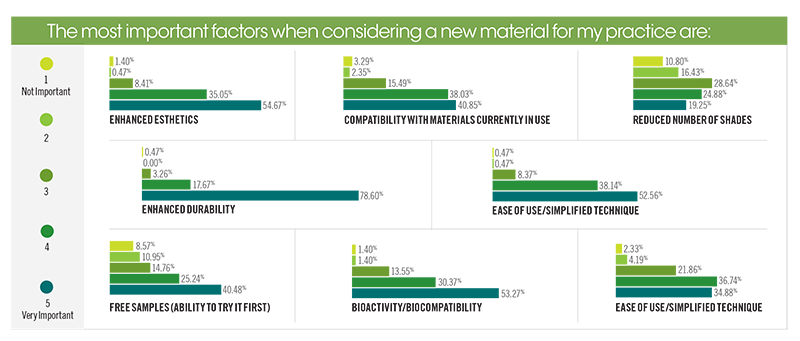
Materials Considerations
Modern dental materials offer a wide array of features. Knowing which factors are most important to you is key. Our survey looked at which of these factors matter the most. Enhanced durability stood out as the most important factor, as 79% of you say it’s a very important consideration, and an additional 18% listed it as important. The other considerations rated very important by more than 50% of the survey respondents were enhanced esthetics, simplified technique, and bioactivity. While almost every aspect of a new material was considered important enough to be taken into account, one product enhancement-a reduced number of shades-did not receive 50% of the respondents listing it as very important or important. When it comes to fewer shades, 27% of respondents said it was not important or slightly unimportant, while an additional 29% of respondents said it was neither important nor not important.
